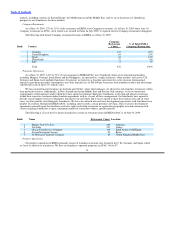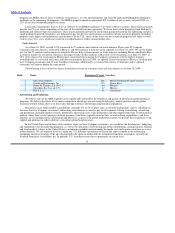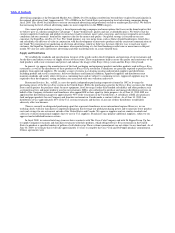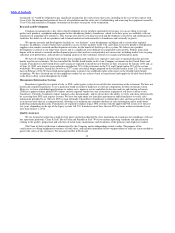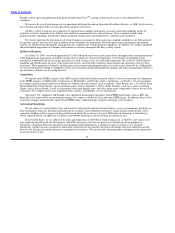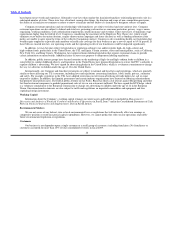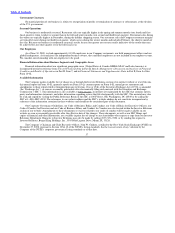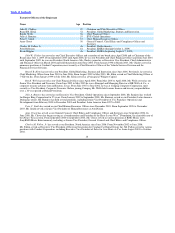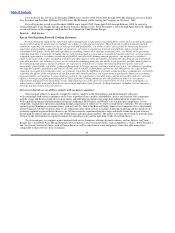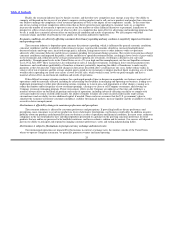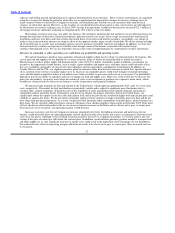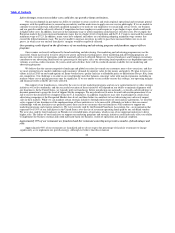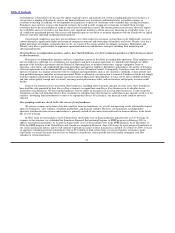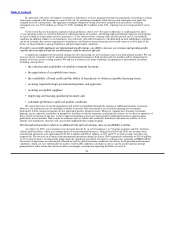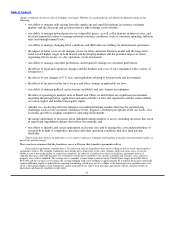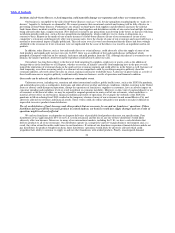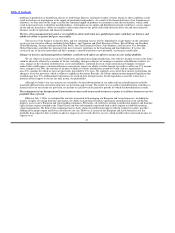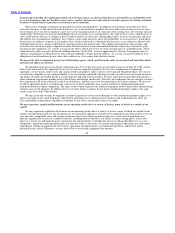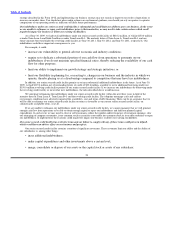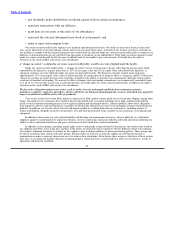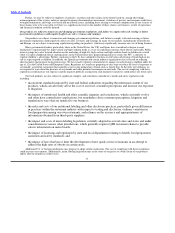Burger King 2009 Annual Report Download - page 23
Download and view the complete annual report
Please find page 23 of the 2009 Burger King annual report below. You can navigate through the pages in the report by either clicking on the pages listed below, or by using the keyword search tool below to find specific information within the annual report.
Table of Contents
expenses and selling, general and administrative expenses denominated in local currencies. These revenues and expenses are translated
using the average rates during the period in which they are recognized and are impacted by changes in currency exchange rates. In
many countries where we do not have Company restaurants, our franchisees pay royalties to us in currencies other than the local
currency in which they operate. However, as the royalties are calculated based on local currency sales, our revenues are still impacted
by fluctuations in currency exchange rates. In fiscal 2009, income from operations would have decreased or increased $12.3 million if
all foreign currencies uniformly weakened or strengthened by 10% relative to the U.S. dollar.
Fluctuations in interest rates may also affect our business. We attempt to minimize this risk and lower our overall borrowing costs
through the utilization of derivative financial instruments, primarily interest rate swaps. These swaps are entered into with financial
institutions and have reset dates and critical terms that match those of our forecasted interest payments. Accordingly, any change in
market value associated with interest rate swaps is offset by the opposite market impact on the related debt. We do not attempt to hedge
all of our debt and, as a result, may incur higher interest costs for portions of our debt which are not hedged. In addition, we enter into
forward contracts to reduce our exposure to volatility from foreign currency fluctuations associated with certain foreign
currency−denominated assets. We are also exposed to losses in the event of nonperformance by counterparties on these instruments.
Increases in commodity or other operating costs could harm our profitability and operating results.
We and our franchisees purchase large quantities of food and supplies which may be subject to substantial price fluctuations. The
cost of the food and supplies we use depends on a variety of factors, many of which are not predictable or within our control.
Fluctuations in weather, global supply and demand and the value of the U.S. dollar, commodity market conditions, government tax
incentives, the imposition of trade barriers, such as tariffs, export subsidies and import taxes, and other factors could adversely affect
the cost, availability and quality of some of our critical products and raw ingredients, including beef and chicken. In addition, in
Canada, Mexico and the U.K., our suppliers purchase goods in currencies other than the local currency in which they operate and pass
all or a portion of the currency exchange impact on to us. Increases in commodity prices could result in higher restaurant operating
costs, and the highly competitive nature of our industry may limit our ability to pass increased costs on to our guests. Our profitability
depends in part on our ability to anticipate and react to changes in food and supply costs. Moreover, to the extent that we increase the
prices for our products, our guests may reduce the number of visits to our restaurants or purchase less expensive menu items, which
would have a material adverse effect on our business, results of operations and financial condition.
We purchase large quantities of beef and chicken in the United States, which represent approximately 20% and 11% of our food
costs, respectively. The market for beef and chicken is particularly volatile and is subject to significant price fluctuations due to
seasonal shifts, climate conditions, demand for corn (a key ingredient of cattle and chicken feed), industry demand, international
commodity markets and other factors. Demand for corn for use in ethanol, the primary alternative fuel in the United States, can
significantly reduce the supply of corn for cattle and chicken feed, and in the past this has resulted in higher beef and chicken prices and
could do so again in the future. We do not utilize commodity option or future contracts to hedge commodity prices for beef and do not
have long−term pricing arrangements. As a result, we purchase beef and many other commodities at market prices, which fluctuate on a
daily basis. We are currently under fixed price contracts with most of our chicken suppliers which expire in December 2009. If the price
of beef, chicken or other food products that we use in our restaurants increases in the future and we choose not to pass, or cannot pass,
these increases on to our guests, our operating margins would decrease.
Increases in energy costs for our Company restaurants, principally electricity for lighting restaurants and natural gas for our
broilers, could adversely affect our operating margins and our financial results if we choose not to pass, or cannot pass, these increased
costs on to our guests. Although we have locked in natural gas prices for our U.S. Company restaurants, we will not achieve any cost
savings if the price of natural gas falls below the contract price. In addition, our distributors purchase gasoline needed to transport food
and other supplies to us. Any significant increases in energy costs could result in the imposition of fuel surcharges by our distributors
that could adversely affect our operating margins and financial results if we chose not to pass, or cannot pass, these increased costs on
to our guests.
21


